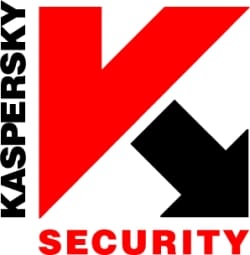 Kaspersky Lab announces the results of new research related to the discovery of the sophisticated nation-state sponsored Flame cyber-espionage campaign.
Kaspersky Lab announces the results of new research related to the discovery of the sophisticated nation-state sponsored Flame cyber-espionage campaign.
During the research, conducted by Kaspersky Lab in partnership with International Telecommunication Union’s cybersecurity executing arm – IMPACT, CERT-Bund/BSI and Symantec, a number of Command and Control (C&C) servers used by Flame’s creators were analyzed in detail.
The analysis revealed new, groundbreaking facts about Flame. Particularly, traces of three yet undiscovered malicious programs were found, and it was discovered that the development of the Flame platform dates back to 2006.
Main findings:
- The development of Flame’s Command and Control platform started as early as December 2006.
- The C&C servers were disguised to look like a common Content Management System, to hide the true nature of the project from hosting providers or random investigations.
- The servers were able to receive data from infected machines using four different protocols; only one of them servicing computers attacked with Flame.
- The existence of three additional protocols not used by Flame provides proof that at least three other Flame-related malicious programs were created; their nature is currently unknown.
- One of these Flame-related unknown malicious objects is currently operating in the wild.
- There were signs that the C&C platform was still under development; one communication scheme named “Red Protocol” is mentioned but not yet implemented.
- There is no sign that the Flame C&Cs were used to control other known malware such as Stuxnet or Gauss.
The Flame cyber-espionage campaign was originally discovered in May 2012 by Kaspersky Lab during an investigation initiated by the International Communication Union. Following this discovery, ITU-IMPACT acted swiftly to issue an alert to its 144 member nations accompanied with the appropriate remediation and cleaning procedures. The complexity of the code and confirmed links to developers of Stuxnet all point to the fact that Flame is yet another example of a sophisticated nation-state sponsored cyber operation. Originally it was estimated that Flame started operations in 2010, but the first analysis of its Command and Control infrastructure (covered by at least 80 known domains names) shifted this date two years earlier.
The findings in this particular investigation are based on the analysis of the content retrieved from several C&C servers used by Flame. This information was recovered despite the fact that Flame’s control infrastructure went offline immediately after Kaspersky Lab disclosed the existence of malware. All servers were running the 64-bit version of the Debian operating system, virtualized using OpenVZ containers. Most of the servers’ code was written in the PHP programming language. Flame’s creators used certain measures to make the C&C server look like an ordinary Content Management System, in order to avoid attention from the hosting provider.
Sophisticated encryption methods were utilized so that no one, but the attackers, could obtain the data uploaded from infected machines. The analysis of the scripts used to handle data transmissions to the victims revealed four communication protocols, and only one of them was compatible with Flame. It means that at least three other types of malware used these Command and Control servers. There is enough evidence to prove that at least one Flame-related malware is operating in the wild. These unknown malicious programs are yet to be discovered.
Another important result of the analysis is that the development of the Flame C&C platform started as early as December 2006. There are signs that the platform is still in the process of development, since a new, yet not implemented protocol called the “Red Protocol” was found on the servers. The latest modification of the servers’ code was made on May 18, 2012 by one of the programmers.
“It was problematic for us to estimate the amount of data stolen by Flame, even after the analysis of its Command and Control servers. Flame’s creators are good at covering their tracks. But one mistake of the attackers helped us to discover more data that one server was intended to keep. Based on this we can see that more than five gigabytes of data was uploaded to this particular server a week, from more than 5,000 infected machines. This is certainly an example of cyber espionage conducted on a massive scale,” commented Alexander Gostev, Chief Security Expert, Kaspersky Lab.
Detailed analysis of the contents of Flame’s command and control servers is published at Securelist.com.
To learn more about Flame read the updated FAQ section here: https://www.securelist.com/en/blog/208193522/The_Flame_Questions_and_Answers
Cross-posted: http://www.businesswire.com/news/






#Flame #Malware #Active since #2006 http://t.co/uFFuqku9